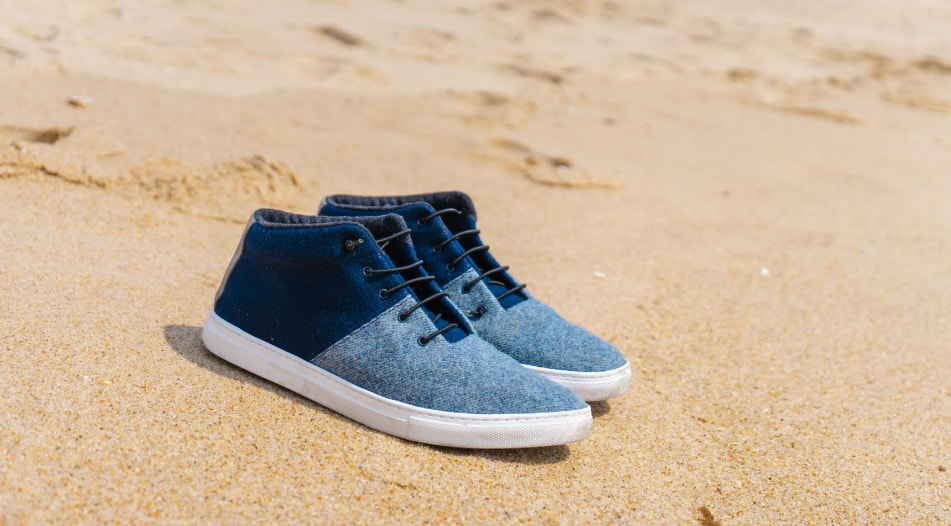Wool: The Perfect Material for the Summer?
When the temperature is rising and you’re looking for a cooling garment to wear what material do you look for on the label? Although we traditionally assume that cotton or cotton blends are the best lightweight summer material, research actually shows that wool is one of the best natural fibers to keep your body temperature down. And with the spotlight on the damaging effects of cotton on the environment and the impact man-made materials have on the planet, many are looking for an eco-friendly and biodegradable alternative. But can a wool shirt or pants really be cooler than fine cotton?

To answer the question we need to look at the type of wool in question here. Like cotton, wool also comes in different fine grades. The thickness of the hair is measured in microns, which indicates its coarseness. So that thick wooly jumper you had as a kid that you’re mom made you wear and that itched like crazy? That was probably a 30 micron wool knit.
A combination of modern technology and the use of extra fine wool like merino or alpaca mean today we’re seeing things like sports apparel, summer shirts or dresses and wool shoes, all perfect for high performance and high temperature.

Monica Ebert, the wool lab manager & research associate at Montana State University, has been conducting research into the types of wool to use in sports apparel, “Aside from the comfort factor, the proper wool results in a very lightweight garment which is perfect for summer and winter too,” she says.
So what is the perfect wool? According to Ebert, wool should be below 20 microns, and ideally in the 18-19 micron range. "We had garments made and fabric tests done, and everything we thought about wool, its breathability, durability; all of our fabric and garment tests came back to prove it had all that and more," says Ebert.
The natural crimp of the wool fiber is what gives it those cooling properties, with the material having evolved over thousands of years to help sheep regulate their body temperature. And it’s those crimps that actually create air pockets in the material that help to keep the wearer cool. But really, does it work?
Research from the University of Otago in New Zealand shows that single jersey wool performs best in both hot, being tested at 32 degrees celsius (90 degrees fahrenheit), as well as cold conditions, stating:
“Measurements of physical, physiological and sensory responses showed the single jersey wool garment offered the best overall performance, with generally lesser physiological demands evident on the wearers”.
In fact those crimps and air pockets that we mentioned are the very feature that keeps the cold out during the winter. But they also keep the heat out in the summer, whilst still allowing the skin to breathe, and hence feel cooler. As wool does not conduct energy, it doesn’t transfer heat or cold through the material and hence keeps the wearer, be they a sheep or a human, either cool or warm.
It seems then that wool is absolutely one of the best materials for all temperatures, including summer heat. But what about sweat and odors? Once again, wool comes out on top here too. In fact, the same research from The University of Otago showed that between polyester and wool, wool retained the least amount of odor thanks in large part to wools natural antibacterial properties. The lanolin that occurs naturally in the wool fibers has evolved to ensure that sheep don’t get bacterial infections of the skin, and as odors are caused by bacteria it also has the added effect of reducing the build up of stink.
And that is also backed up by Monica Ebert’s research over at Montana University, “...the fiber qualities of wool are exactly what you want (when exercising or in high temperature environments). They work with your body to wick moisture away to keep you cool”.
It seems there is no arguing with these findings. Wool is indeed the perfect material for the summer. Get your feet in the perfect summer material with a pair of our fan-favourite wool sneakers



